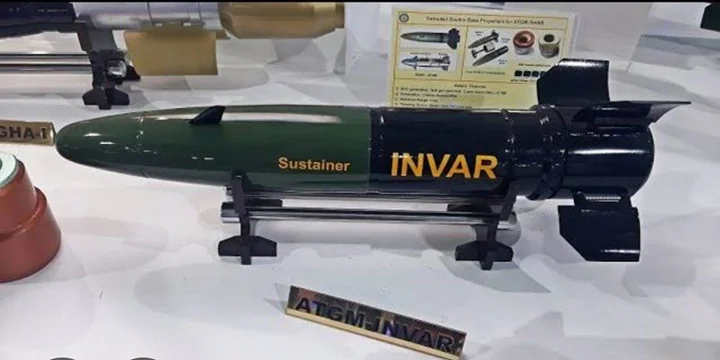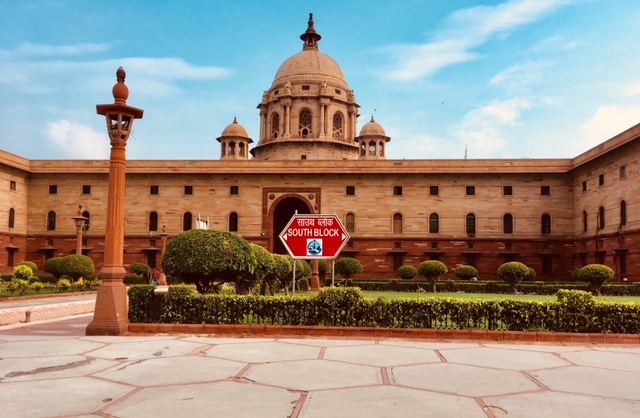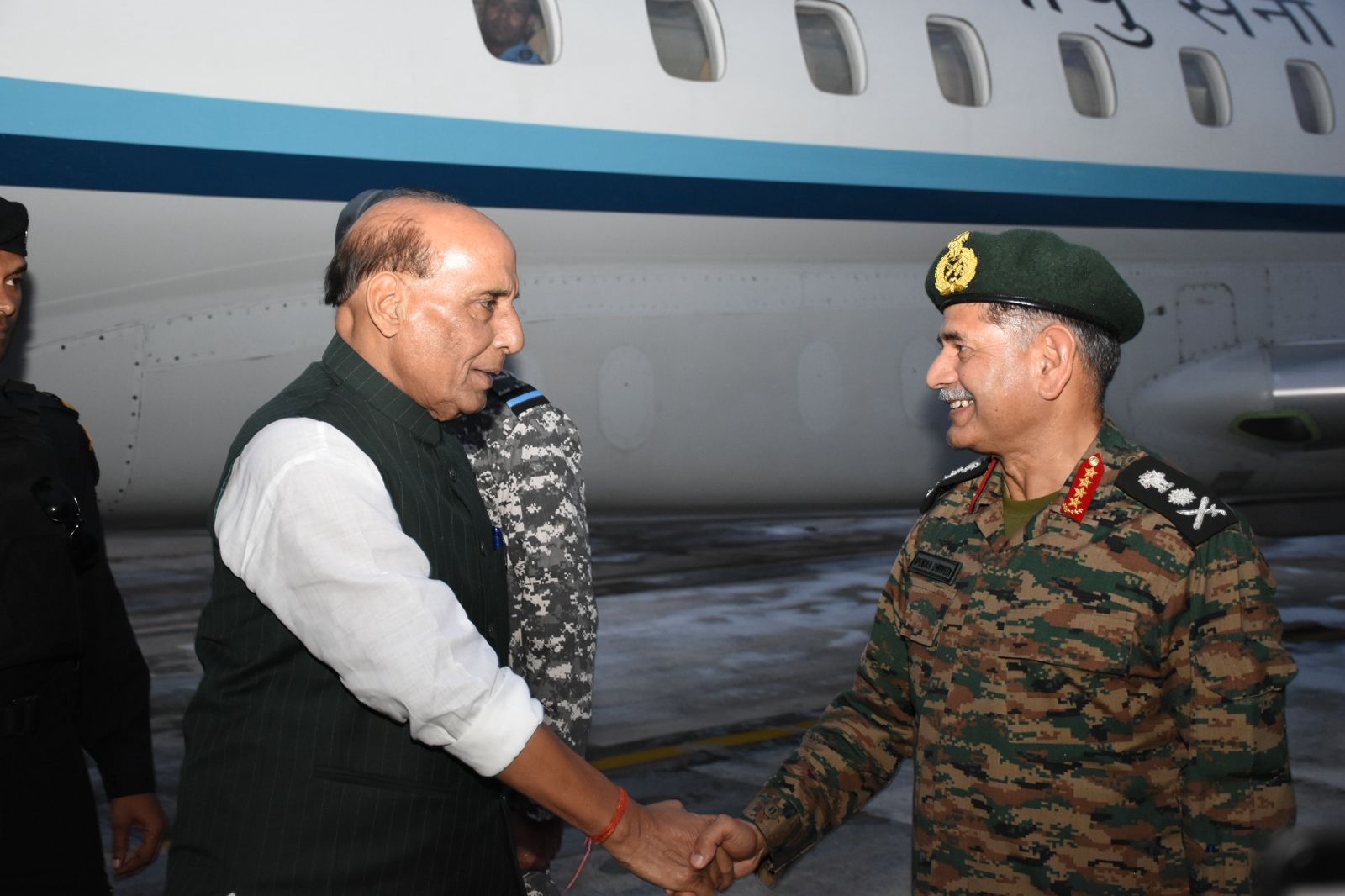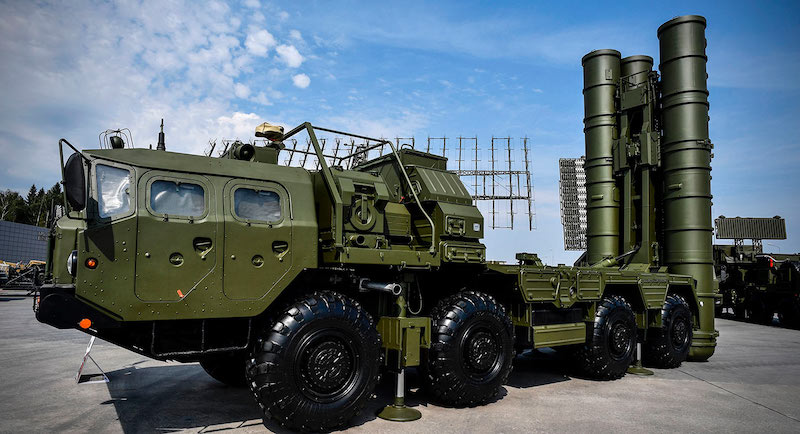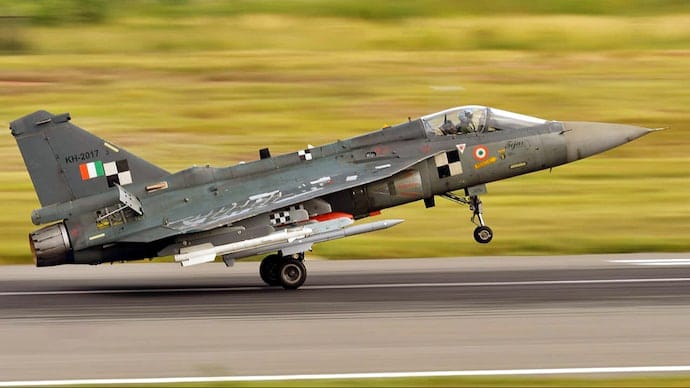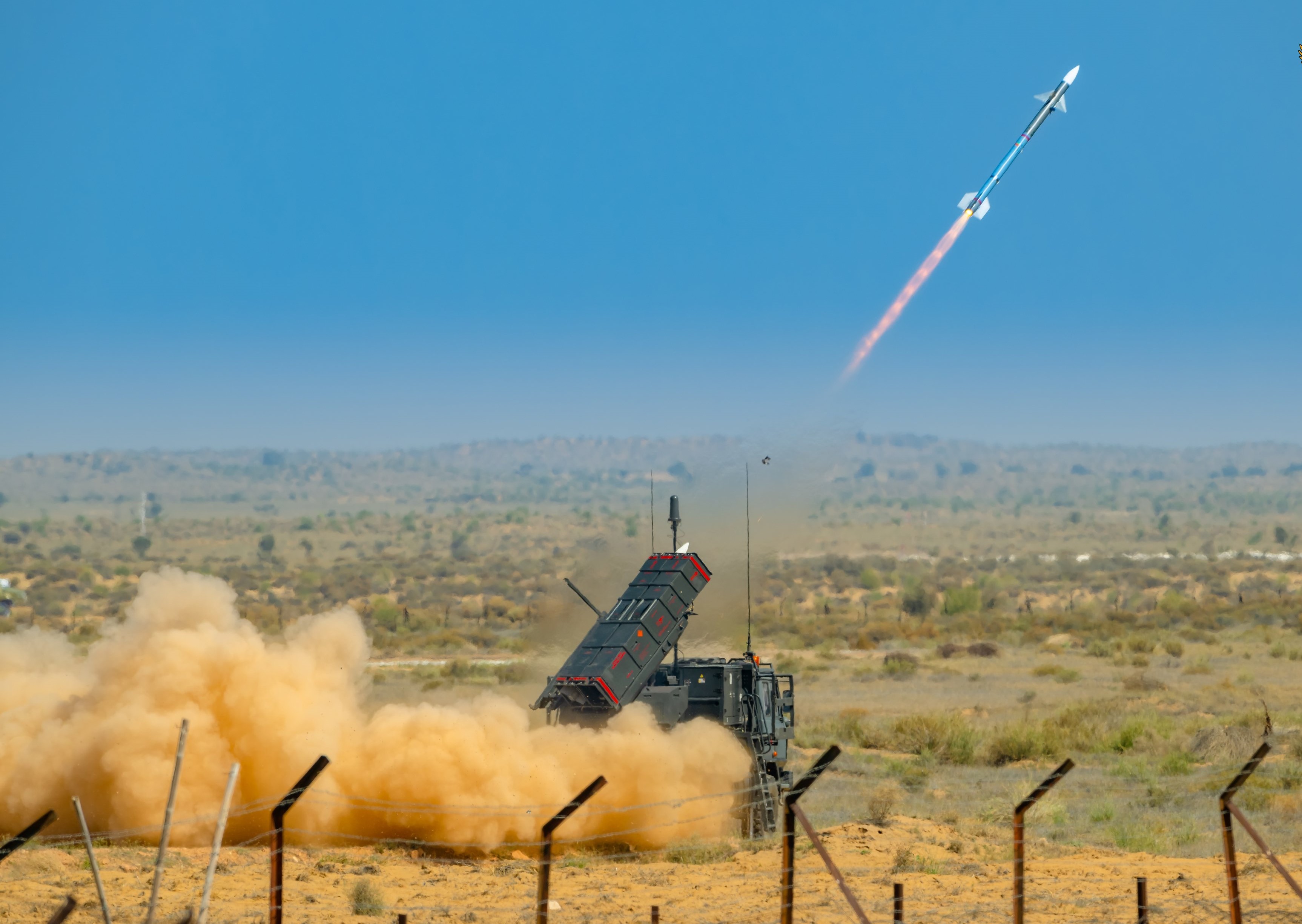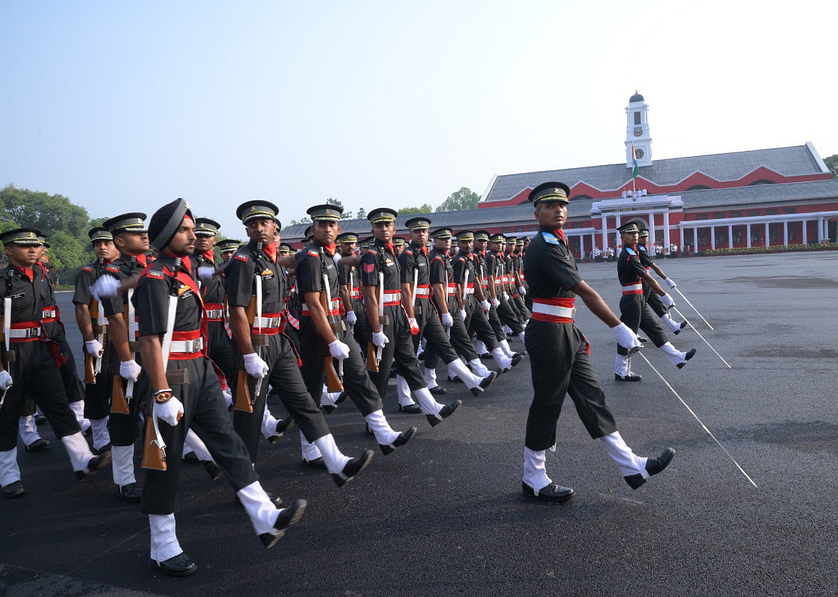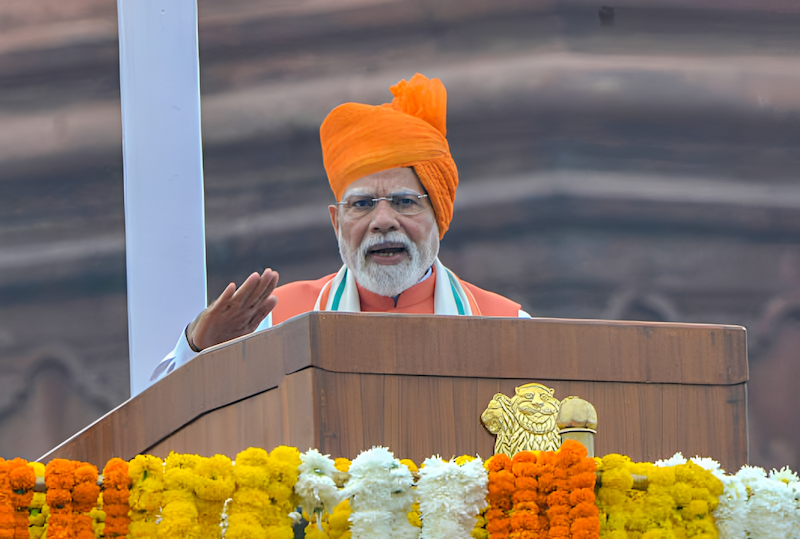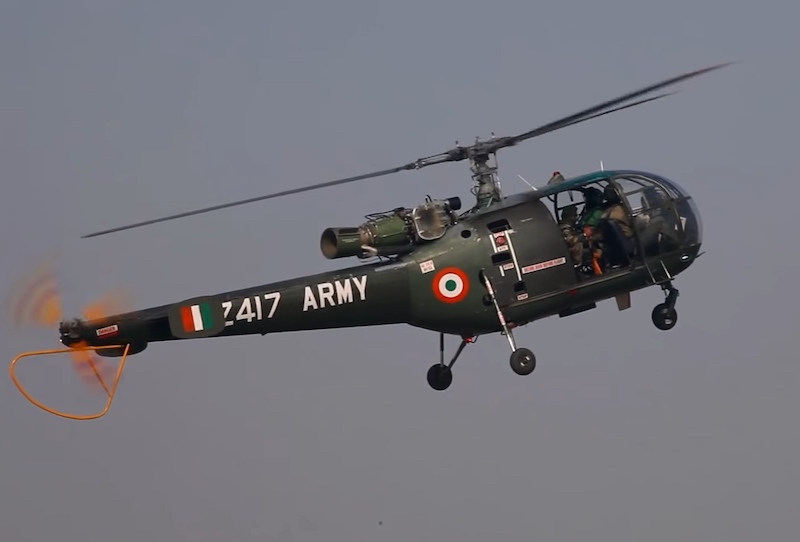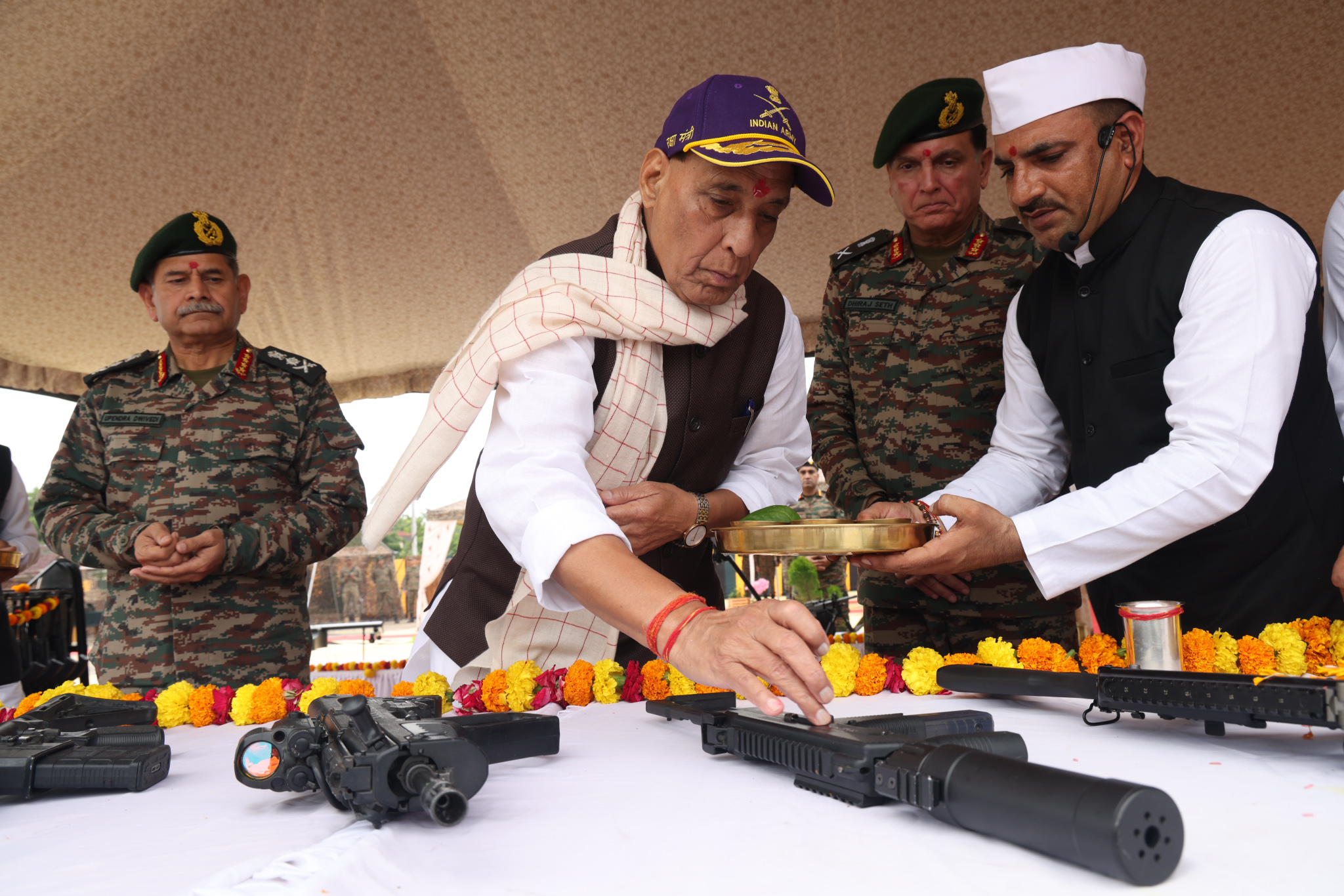 Rajnath Singh performs Shastra Puja at Bhuj in Gujarat (Photo: Ministry of Defence)
Rajnath Singh performs Shastra Puja at Bhuj in Gujarat (Photo: Ministry of Defence)
New Delhi: India will rewrite the history and redraw the geography of Pakistan if it dares to engage in any misadventure in the Sir Creek sector, the defence minister, Rajnath Singh, warned on Thursday, following the “Shashtra Puja” (weapon worship) ceremony at the Bhuj Military Station in Gujarat.
Drawing attention over the Sir Creek sector dispute even after 78 years of Independence, Singh said Pakistan continues to create disputes over the Sir Creek sector, despite India’s repeated efforts to resolve the issue through dialogue.
Pointing out that Pakistan’s recent expansion of military infrastructure in the Sir Creek Sector, the minister said it reflects their ill intent, adding that any misadventure by them in the Sir Creek sector will invite a decisive response.
“If Pakistan dares to act in Sir Creek sector, the reply will be so strong that it will change both history and geography. In 1965, the Indian Army showed courage by reaching Lahore and in 2025 Pakistan must remember that the road to Karachi also passes through the creek.”
In 2023, India Sentinels had reported that Pakistan has been beefing up its infrastructure in the disputed Sir Creek region near the international border in Gujarat.
हमारे लिए शस्त्र केवल उपकरण नहीं हैं और न ही केवल शक्ति प्रदर्शन का साधन। शस्त्र धर्म की स्थापना करने के साधन हैं।
— Rajnath Singh (@rajnathsingh) October 2, 2025
भारत सिर्फ शस्त्र की पूजा ही नहीं करता, बल्कि समय आने पर शस्त्रों का इस्तेमाल करना भी जानता है। pic.twitter.com/yj4xqIOz3t
What is the Sir Creek dispute?
The Sir Creek dispute is a territorial dispute between India and Pakistan over a 98-kilometre creek in a marshy and uninhabited region in the Rann of Kutch along the border of India’s Gujarat state and Pakistan’s Sindh province. The dispute is over the interpretation of the maritime boundary between the two countries in the area.
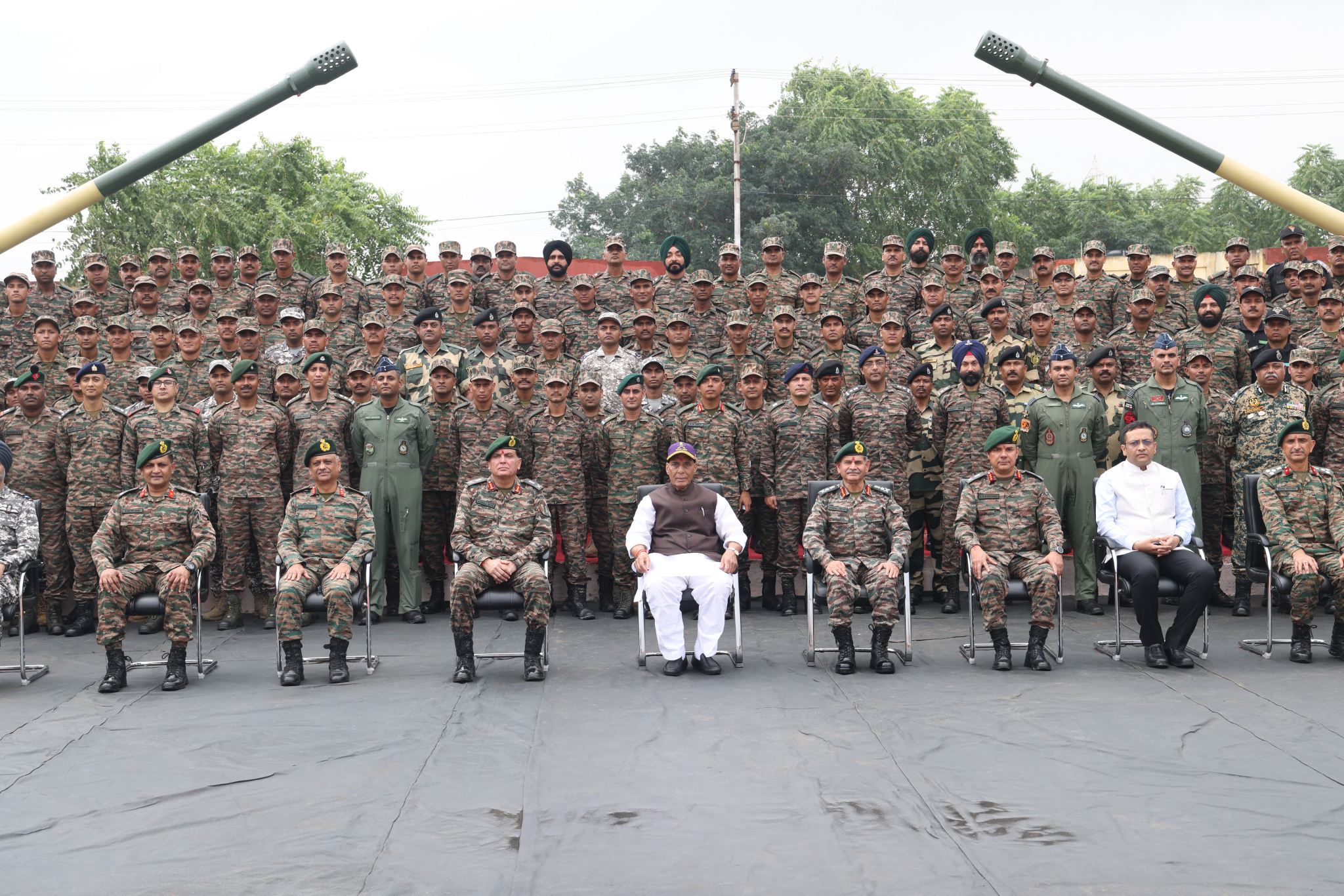 Rajnath Singh along with the Indian Army chief, General Upendra Dwivedi, at the Bhuj Military Station.
Rajnath Singh along with the Indian Army chief, General Upendra Dwivedi, at the Bhuj Military Station.
Both India and Pakistan claim sovereignty over the creek and the adjoining waters.
The main point of contention is the exact location of the boundary line in the creek and its estuary, which determines the respective maritime rights of the two countries.
Pakistan claims the entire strip of water while India says the boundary should be demarcated from the middle of the strip along its length.
The dispute is a legacy from the Partition in 1947 when the boundary between the newly created India and Pakistan was not clearly demarcated in the creek area. Both countries have different interpretations of the boundary based on historical, legal, and geographical factors.
Over the years, India and Pakistan have engaged in several rounds of negotiations and discussions to resolve the Sir Creek dispute. These efforts have involved the exchange of maps, surveys, and field visits to the disputed area.
However, the two countries have, so far, failed to arrive at a mutually acceptable agreement to resolve the dispute.
Operation Sindoor
In his address, Rajnath Singh lauded the Indian Armed Forces for successfully thwarting Pakistan’s attempts to breach India’s defence network during Operation Sindoor.
"Pakistan had tried to penetrate India’s defences from Leh to Sir Creek Sector, but the swift and effective counter-action of the Indian forces not only exposed the weaknesses of Pakistan’s air defence system but also sent out a clear message to the world that India can inflict heavy damage at a time, place and manner of its choosing," he said.
Lauding the success of Operation Sindoor in record time, Rajnath Singh said that it was possible due to the seamless jointness of the Armed Forces, adding that all military objectives of Operation Sindoor were successfully achieved and reaffirmed that India’s fight against terrorism will continue with full resolve.
He congratulated the soldiers and officers for their strategy, courage and capability that proved India’s ability to defeat its adversaries under any circumstances.
Shastra Puja at Bhuj Military Station
It is not merely a ritual, but a reflection of India’s civilizational philosophy, where weapons are regarded as instruments of dharma, not just tools of violence.
He drew parallels from Indian tradition where farmers worship their plough, students revere their books, and soldiers honour their weapons.
Stressing that weapons must always be used for the protection of justice and righteousness, he said: “Knowledge without the power to defend it is vulnerable, and power without the guidance of knowledge leads to chaos. The balance of Shaastra (knowledge) and Shastra (weapons) keeps our civilization vibrant and invincible.”
On the occasion, Rajnath Singh virtually inaugurated the Tidal Independent Berthing Facility and the Joint Control Centre (JCC), in the strategic Creek sector.
The facilities will act as major enablers for integrated coastal operations while significantly enhancing joint operational capability, coastal security coordination and rapid response to any threats.
The event was also attended by the chief of Army staff, General Upendra Dwivedi; Southern Army commander, Lieutenant General Dhiraj Seth; corps commander of 12 Corps, Lieutenant General Aditya Vikram Singh Rathee; and air officer commanding of Air Force Station Bhuj, Air Commodore KPS Dham.

